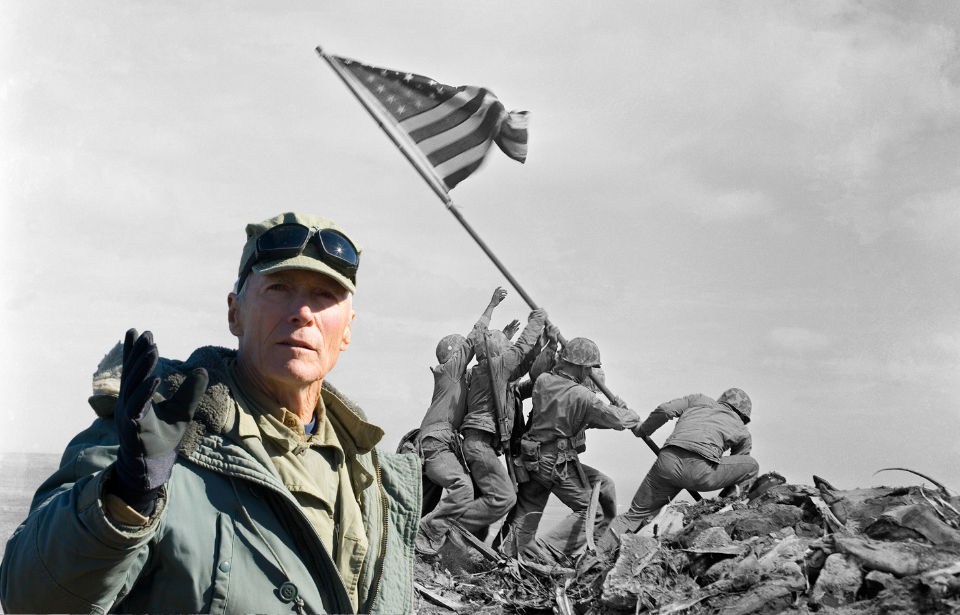In 2006, legendary actor and director Clint Eastwood released two World War II-era films that focused on both the American and Japanese perspectives of the Battle of Iwo Jima: Flags of Our Fathers and Letters from Iwo Jima.
Eastwood aimed to depict the engagement as it truly was. In an interview with NPR, he said the two weren’t “meant to take either side of the story,” adding that “what it boils down to is when mothers are losing their sons, whether they’re Japanese or American, the reaction always has the same pathos.” The result was a two-part masterpiece of cinema.
Flags of Our Fathers and Letters from Iwo Jima
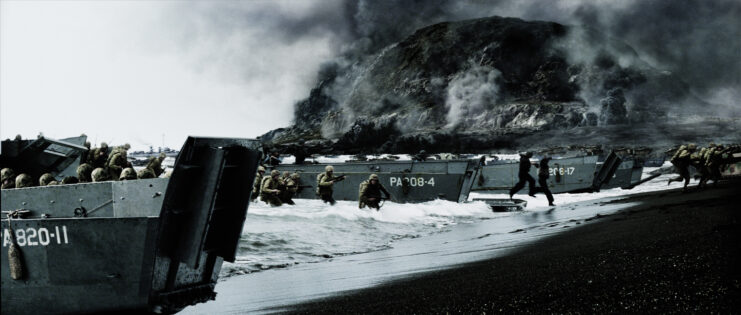
Flags of Our Fathers is based on the book of the same name by James D. Bradley and Ron Powers. The film depicts the events surrounding the raising of the American flag on Iwo Jima during the Second World War and the subsequent fame and scrutiny received by those involved. The story is told from the perspective of three soldiers – John Bradley, Rene Gagnon and Ira Hayes – who are sent on a national tour to raise money for the war effort.
Letters from Iwo Jima tells the story of the same battle, this time from the perspective of the Japanese. It specifically follows the experiences of Gen. Tadamichi Kuribayashi, who is sent to Iwo Jima to prepare for the incoming American forces. Through their letters, we learn about the Japanese soldiers’ personal struggles, fears and sense of duty, as well as their admiration and loyalty to their leader.
The two movies together present a more rounded representation of the Battle of Iwo Jima that had never before been presented. For this, they were nominated for – and won – various awards, including Oscars, Golden Globes, Critics’ Choice Awards and the 2007 Cinema for Peace Award for the most valuable film of the year.
Battle of Iwo Jima
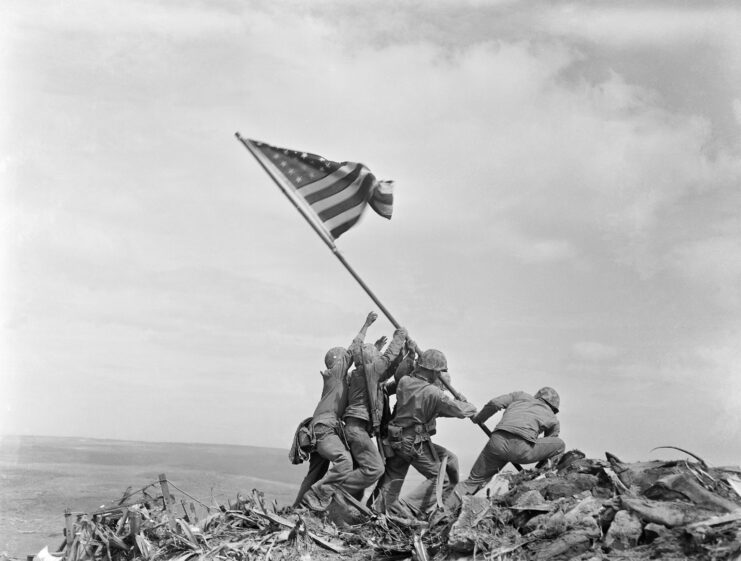
The Battle of Iwo Jima was a significant military campaign that took place from February 19 – March 26, 1945 between the US Marine Corps and the Imperial Japanese Army. The island held strategic importance for both sides, as it was located halfway between Japan and American bases in the Marianas. The US military, therefore, viewed its capture as crucial in their proposed plan to invade the Japanese mainland.
Beginning on February 19, the Marine Corps conducted a massive amphibious assault on the island. The Japanese defenders, numbering around 21,000, were deeply entrenched in a network of tunnels and caves, making them difficult to dislodge. The battle became a brutal and prolonged struggle, with the Americans facing fierce resistance and heavy casualties.
Despite these challenges, the US forces gradually gained ground and eventually captured the island on March 26. The Battle of Iwo Jima resulted in heavy losses for both sides, with the Americans suffering 27,071 total casualties and the Japanese seeing between 17,845-18,375 dead or missing – almost the entirety of their defensive force.
The engagement remains one of the most iconic and widely recognized battles of the Second World War, particularly from the US perspective. The raising of the American flag atop Mount Suribachi became an enduring symbol of valor and sacrifice, and it has been memorialized by the Marine Corps War Memorial in Washington, DC.
Reaction to Clint Eastwood’s duology
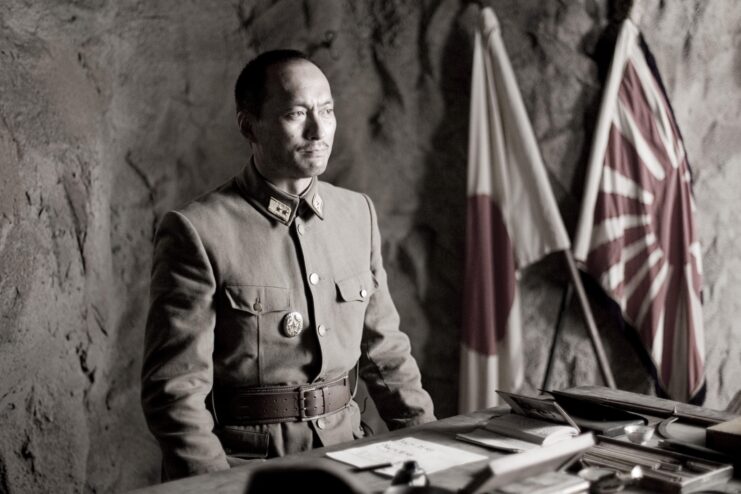
Flags of Our Fathers and Letters from Iwo Jima received both public and critical acclaim.
As reported by Reuters, Hiromasa Murakami, a 50-year-old carpenter, saw Letters from Iwo Jima in the theater to see if an American could tell the stories of both sides. He left believing Eastwood did it right, saying, “It was marvelous. How should I express it? It was the same for both sides, for them and us. Everyone was a victim.”
The Battle of Iwo Jima, while upheld as a show of American sacrifice, has been largely forgotten in Japan. Eastwood said at a press conference in the country, “None of my Japanese actors knew anything about Iwo Jima. You lose 21,000 people! To just ignore them … what would happen if we did that?” He added, “I think it’s important that everybody remember that people gave their lives to protect their country,”
For a long time, Iwo Jima has been viewed as a defeat in Japan, and to make a film about it would be unthinkable. Eichi Tsukada, a 71-year-old retiree whose father died in World War II, gave insight into the country’s position by saying, “Iwo Jima was a defeat. It was miserable and no Japanese movie company wanted to try to show it.”
That being said, Eastwood was able to deliver a film with respect and honesty. Ken Watanabe, who starred as Gen. Kuribayashi in Letters from Iwo Jima, explained, “As a person in the Japanese movie industry, I have the slightly embarrassing sensation that we should have turned our attention to the Battle of Iwo Jima and filmed something on the theme earlier.”
The film turned the tide on the almost-forgotten battle. One 17-year-old high school student, Satoshi Koyama, was reported as saying that he learned something, and that “American and Japanese soldiers were fighting with the same emotion. Both wanted to return to their homelands.”
Iwo Jima, today
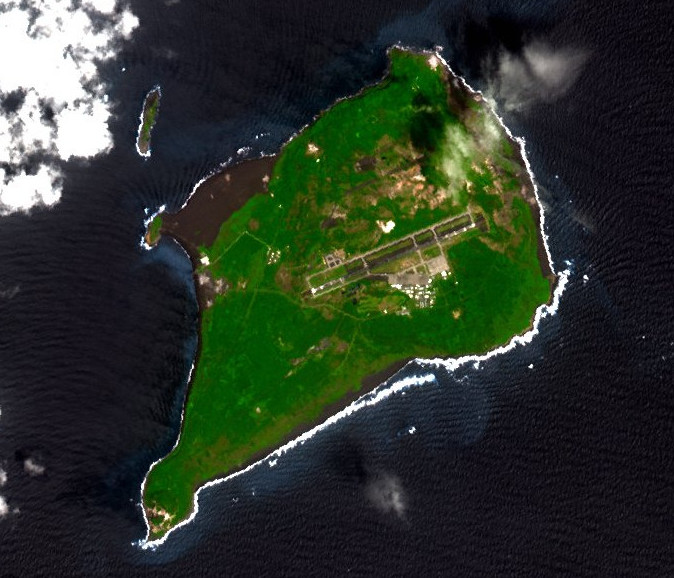
Iwo Jima is governed by the Japanese government. The island, however, has no permanent settlement and is only used by the Japanese Maritime Self-Defense Force, which operates a naval air base there. The lack of an official population is partially due to the 1945 battle and the memories of it.
Beyond the relatives of those who fought on both sides and fell, civilians aren’t able to visit. It was only after a great deal of negotiation that Eastwood could. Journalists also made the trip. As they left, many took stones or other mementos, prompting the defense agency’s public information division to urge them to leave the objects behind. The reason? “You will be haunted by the ghosts of Japanese soldiers.”
More from us: Panzerschreck: Germany’s Much More Powerful Version of the American Bazooka
The Battle of Iwo Jima was one that saw mass casualties and the bitter-sweet victory of one side over the other. For Americans, it was a success. For the Japanese, it was a defeat. With Flags of Our Fathers and Letters from Iwo Jima, Clint Eastwood provided an even plain for viewers to see the engagement and war for what it really was.
